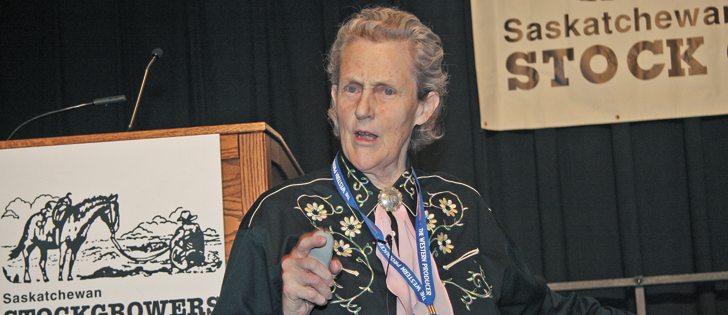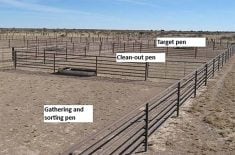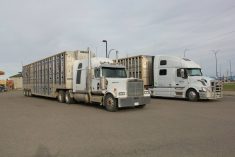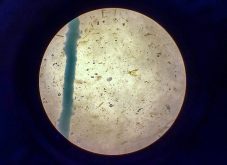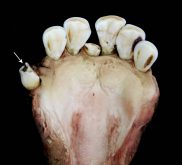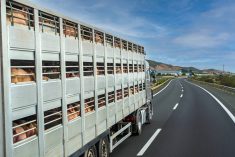Slaughter plants have improved handling and conditions, but new health issues are becoming evident, says animal welfare expert
Animal welfare expert Temple Grandin said she’s seen improvements in handling and overall conditions at slaughter plants over the years, but now she’s seeing other concerns.
She said that 20 years ago, only 30 percent of slaughter animals were stunned on the first shot. In 2015, three Canadian plants averaged 99.7 percent.
“That is super phenomenal,” Grandin said. “ I never thought they could get that good.”
But she said she is worried about what might occur before the animals arrive at slaughter.
“If somebody said to me 10 years ago we’d have lame beef cattle I would have thought I was absolutely crazy,” Grandin told reporters at the Saskatchewan Stock Growers Association convention.
Read Also

Manitoba extends Crown land rent freeze
Manitoba government links the continued rental rate freeze on grazing and forage leases to economic and environmental challenges facing the industry
However, that’s exactly what she’s seeing.
She said heavier weights and genetics are at least partly to blame.
“We have got to select cattle, breeding stock, for feet and legs before we have a problem. Some of these bulls (at purebred shows) are so post-legged in the back they can’t barely walk.”
Visual appraisals in breeding are still important, she said.
The overuse of beta agonists in hot weather and digital dermatitis, which is showing up in some feed yards, also contribute to lameness.
“We’re just starting to get hints of this kind of trouble,” Grandin said.
Tackling the problems early will lead to better animal welfare, she said.
She suggested clear, measurable standards that everyone can apply at all points of the supply chain. For example, an animal with a body condition score of one should never be loaded on a truck. There are visual standards that equate to that number that anyone can use, she said.
Grandin sees the Canadian beef code of practice and World Organization of Animal Health standards as base lines that producers who want to fit into niche markets such as certified humane or certified Angus, can improve upon.
She wouldn’t comment specifically on Canadian systems but said standards that can be scored numerically are more easily measured.
“We’ve got to get away from all the vague wording like ‘adequate space,’ ‘handle them properly,’‘ just keep cattle clean.’ I don’t know what that means,” she said. “You’ve got to have scoring systems that are more objective.
“I have found a lot of government officials in some cases that don’t like a clear standard.”
Grandin also said producers should work with cattle on foot before shipping. Cattle have a different view of people when they are on horses or ATVs than they do when they walk among them.
That can improve handling throughout the system and maintain better animal welfare at slaughter.


